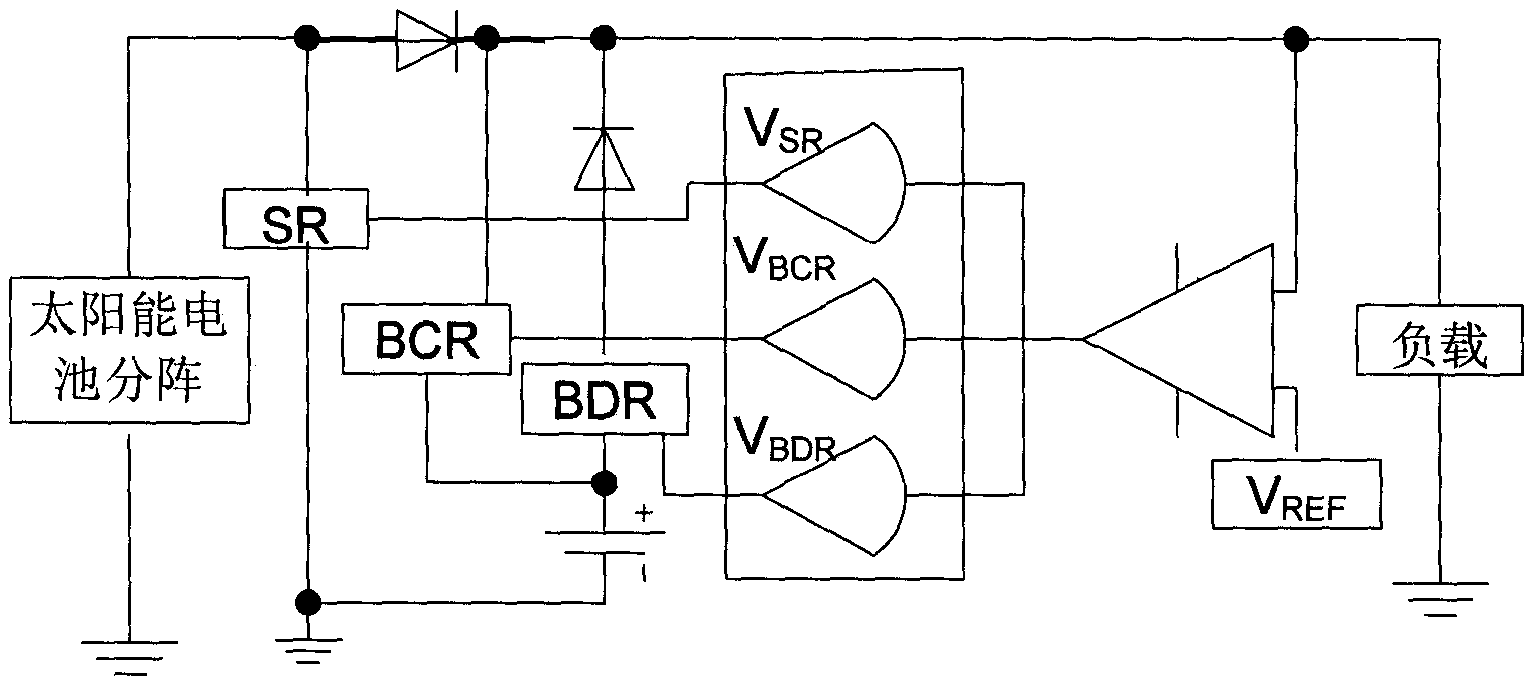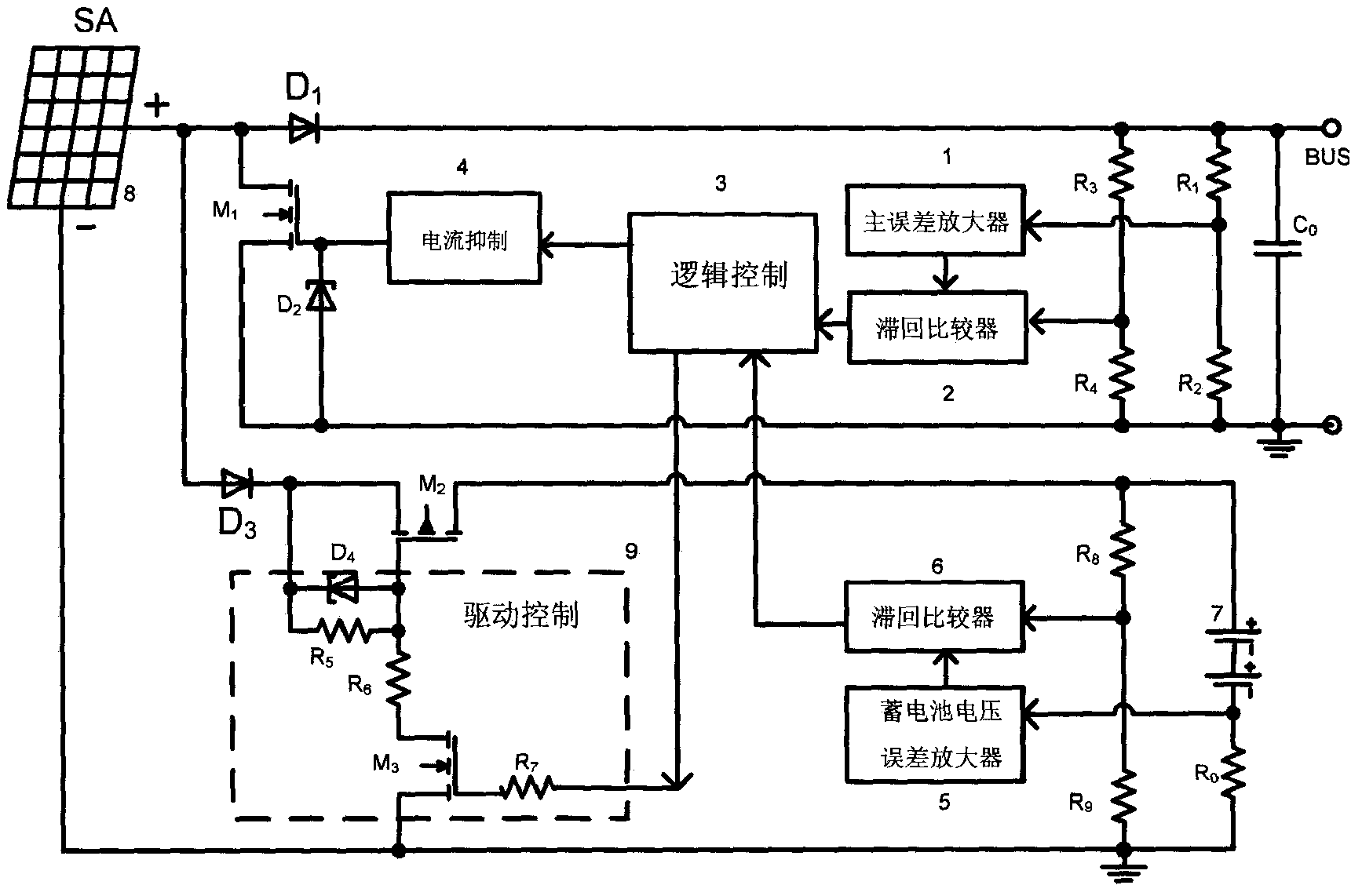A shunt regulator for solar cell array
A shunt regulator, solar cell technology, applied in the direction of conversion equipment without intermediate conversion to AC, can solve problems such as application, difficult spacecraft, etc., to improve reliability, suppress current spikes, and simplify different reference voltage generation circuits. Effect
- Summary
- Abstract
- Description
- Claims
- Application Information
AI Technical Summary
Problems solved by technology
Method used
Image
Examples
Embodiment Construction
[0027] like figure 2As shown, it is a schematic diagram of a shunt regulator for a solar battery array of the present invention, which mainly includes a main error amplifier 1, a battery voltage error amplifier 5, a first hysteresis comparator 2, a second hysteresis comparator 6, and a current suppression unit 4. The shunt adjustment tube M1, the charge adjustment tube M2, the logic control unit 3 and the drive control unit 9. The main error amplifier 1 is mainly used to adjust the output bus voltage. After comparing the sampled bus voltage with the first reference voltage, its output signal is used as an input of the first hysteresis comparator 2. The first reference voltage can generally be obtained by Provided by Zener diodes, it can also be provided by other voltage reference sources. The first hysteresis comparator 2 is mainly used to generate the driving pulse of the shunt adjustment tube, and its other input comes from the step-by-step sampling of the bus voltage. Th...
PUM
 Login to View More
Login to View More Abstract
Description
Claims
Application Information
 Login to View More
Login to View More - R&D
- Intellectual Property
- Life Sciences
- Materials
- Tech Scout
- Unparalleled Data Quality
- Higher Quality Content
- 60% Fewer Hallucinations
Browse by: Latest US Patents, China's latest patents, Technical Efficacy Thesaurus, Application Domain, Technology Topic, Popular Technical Reports.
© 2025 PatSnap. All rights reserved.Legal|Privacy policy|Modern Slavery Act Transparency Statement|Sitemap|About US| Contact US: help@patsnap.com



